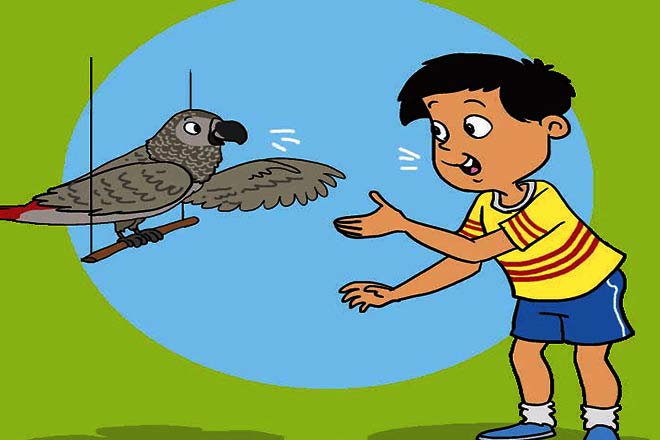



However, there are some animals that are not known for their nurturing instincts, and make a very different kind of animal mother.

Orangutan- Even though Orangutans are known to be very solitary and independent apes, they build strong bonds with their mothers. Orangutan mothers carry their offspring for the first two years of their lives. During this period the young ones learn what kind of food is good to eat, where they can find it, what material can be used to build a nest and how to do so. This training period lasts from six to seven years. Then mothers and offspring part ways, but not for good. They pay regular visits to their mothers until they are 16. Typically, orangutans live up to 45 years or more in both the wild and captivity.
___________________________________________

African Elephant mothers are the largest land mammal mothers on Earth. When new in the role, mothers are never left alone in caring for their little ones. Due to the matriarchal organization of the group they live in, the other female elephants support all new moms during their 22-month pregnancy. By doing so, the new mothers learn how to raise their babies, what food to give them, dangers to watch out for and places to go. The babies suckle on mother’s milk for 4 to 6 years.
___________________________________________

Lion- Even though lions do not inhabit jungles, they are recognized as the kings of the jungle. Generally, a mother lioness is protective, attentive and caring with her little ones, especially when they are very young. Unfortunately, when a new male takes over a pride, lion mothers allow the new lion king to kill all cubs younger than two years old and start a new dynasty from scratch.
Giant Panda- Giant pandas get pregnant with great difficulty. When they do succeed, they deliver up to three cubs. Out of the three, giant panda реəцатар mothers choose only the strongest-seeming cub to raise, abandoning the others.
___________________________________________


Summer is here. As the sun beats down on us, we need caps and umbrellas to shield us from the harsh sunlight. So we carry them whenever we step out.
The cape ground squirrel of South Africa too carries its umbrella everywhere. It can never leave it behind even if it wants to. Do you know why? Because it uses its tail as an umbrella!
The cape ground squirrel lives in the Kalahari Desert of South Africa. It lives in burrows and not on trees, unlike others we usually see in our gardens and parks. This is because there are no trees in the desert where it can live on or use its shade. This squirrel spends its day foraging for plants and seeds around its burrow. So it cannot avoid going out in the sun. That’s when its bushy tail comes to the rescue. It uses its bushy tail to cover its head while it is searching for food. While foraging, the squirrel positions itself with its back facing the sun and its tail erect and above its head.
The squirrels spend the hottest part of the day in their burrows, which are much cooler because they are about 60 cms below the ground.

Summer is almost here. When the temperature goes up, we turn to cold drinks and ice creams to cool ourselves down. But the shovel-snouted lizard has an innovative way to cool off. When the weather becomes too hot-it starts to dance!
The shovel-snouted lizard is found in the world’s third largest desert-Sahara, in Northern Africa. When the sand becomes too hot to stand on, the lizard balances itself on its tail and raises two of its feet at a time— alternating between front left and the rear right, and vice-versa—for about 10 seconds each. It does so to cool its feet. When the shovel-snouted lizard does this, it looks as if it is dancing
The shovel-shouted lizard can remain buried deep in the sand for an entire day.
It also uses the sand to its advantage to hide and hunt. When the lizard spots a predator, it dives and buries itself in the sand. It stays hidden under a layer of sand and pops only its head out. It does the same while hunting too. The lizard surprises its prey by quickly emerging from under the sand and grabbing it. It usually feeds on small insects like beetles, moths and spiders.

Do
_________________________________

1. Use the lid to trace a circle on the white paper and cardboard. Cut both of them.
_________________________________

2. Using a pencil and scale, divide the circular sheet of paper into 6 equal parts as shown, and colour each in a different colour: purple, blue, green, yellow, orange and red.
_________________________________

3. Glue the paper to the cardboard.
_________________________________

4. Make a small hole in the centre of the disc and poke a skewer through it. Hold the skewer and spin the colour disc.
_________________________________

See
As you spin the disc fast, you will see that the different colours start to merge and appear as one colour (white).
_________________________________
Think about
Why do the different colours combine and appear white?
First, the colours combine and appear as one because of the way our eyes read moving images. When the disc spins, our eyes cannot register the colours separately, and hence perceive them as one. Second, the colours combine and appear white because of the composition of white light. All types of light travel in waves of different frequencies. Our eyes can only see lights that travel within a specific range of frequency called the visible spectrum. This spectrum consists of lights of different colours: red, orange, yellow, green, blue, indigo, and violet. When these colours are combined or travel together, they fuse into one to form white light. So, when the disc spins, the colours combine and appear white.
Let’s Find Out
How are rainbows formed?

The (white) light that we receive from the sun is composed of several colours. When a beam of sunlight passes through rain drops (which is why we see rainbows mostly during the monsoon), at a certain angle on its way down, it splits into the different colours it is composed of, thus forming the rainbow.
Photo credit: Pixabay.com

Parrots are commonly known to imitate sounds such as the barking of a dog and security alarms. Sometimes, they also repeat words. Unlike humans, parrots do not have vocal chords or lips. Parrots use a vocal organ called syrinx that controls the movement of air within the throat to produce different sounds. The syrinx can also produce two sounds at the same time. The parrot’s thick tongue aids in speech. When air passes through the syrinx, the parrot moves its tongue to produce sounds.
tongue to produce sounds. Among all species of parrots, the African grey parrot is considered to be the most intelligent and has a greater memory. Hence, it is able to learn a greater vocabulary.
The African grey parrot does not only speak human language, but it is also the only bird known to understand what it speaks. It understands what each word stands for. Cosmo, an African grey parrot, would use different phrases depending on whether the owner was in the room or not. When the owner was away, it would use phrases that established location like “I’m here”, “Where are you?”. When the owner was in the room, it would use phrases to establish interaction like “Do you want to play?”
Alex, an African grey þarrot, was trained by researchers to speak 100 words, identify 50 objects, 7 colours and 6 shapes!





